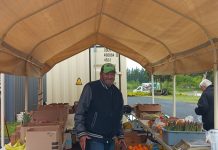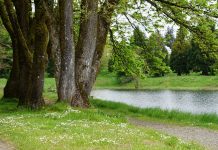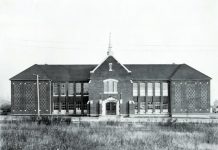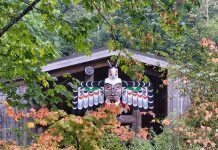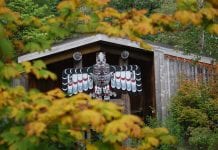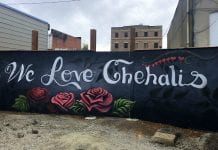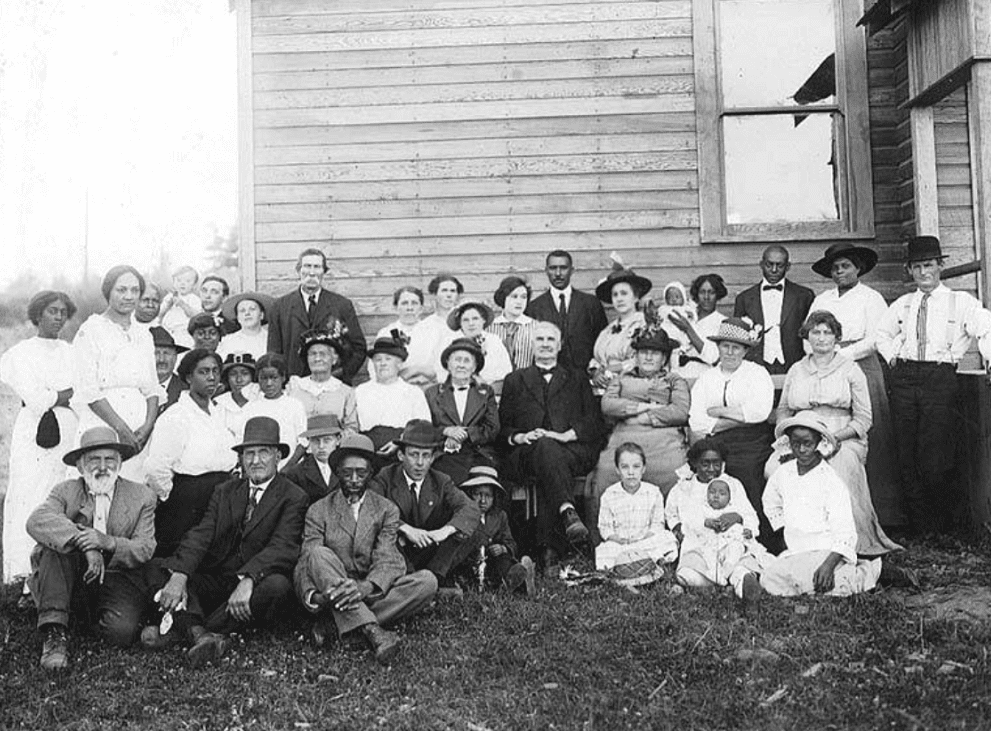When it comes to Black History month, Lewis County residents are proud to claim our own George Washington, the remarkable African American man who founded the town of Centralia (formerly Centerville) in 1875. His incredible story of courage, determination, and vision has been recorded by local author/historians Brian Mittge and Kerry MacGregor Serl in their well-researched biography, George Washington of Centralia.![]() But many locals may not be aware that other industrious and well-respected African Americans also left their mark on the history of Lewis County. Men like Dick Powell, an itinerant teacher in Southwest Washington, and Thomas Lynch, who was the leader of a small Black settlement in Winlock, were little-known but integral parts of our county’s Black history.
But many locals may not be aware that other industrious and well-respected African Americans also left their mark on the history of Lewis County. Men like Dick Powell, an itinerant teacher in Southwest Washington, and Thomas Lynch, who was the leader of a small Black settlement in Winlock, were little-known but integral parts of our county’s Black history.
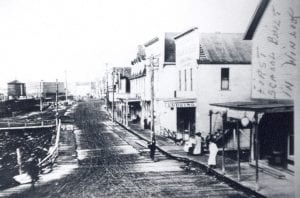
These fascinating and note-worthy stories might not have surfaced if it wasn’t for a curious resident, Betsy Browne, who wanted to know more about the history of her farm just outside of Winlock. She began her research in 1970 and was surprised to learn that her 1926 farmhouse had been built by a Black family. Even more interesting was discovering that they were part of a small Black settlement in Winlock during the first half of the twentieth century—a fact she had never heard before. Intrigued, she dug even further. “I knew my mind couldn’t rest until I found out more,” wrote Browne.
Questions drove her research: What brought so many Black people to a predominantly white area? Did whites and Blacks mix frequently, or did Winlock’s Black population find racism greeting them whenever they applied for jobs or went to town to shop or sell their farm produce? What jobs did Blacks find in that “Olequa Territory?” Certainly, the most mysterious question of all–why were there no Black people living around Winlock now?
Browne’s personal quest turned into an extensive research project. By writing letters and interviewing people by telephone and in person, Browne began “putting the pieces of this puzzle together.” What resulted was a very “interesting and very human story” that deserves to be shared with a new audience. Here is what she discovered:
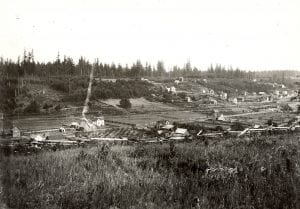
Black people began to settle in Winlock as early as the 1870s. Around that time, a well-educated Black man by the name of Dick Powell came to the area to teach. He was the first teacher to come to the Olequa Territory and traveled around to several schools in Southwest Washington. He mainly taught white children. Powell later homesteaded on what was known as the Patterson place and spent his last years in the home of Frank Pumphrey, a white man whose brother was the first to take up a donation land claim in Olequa Territory.
In 1902, an enterprising man named Thomas Lynch arrived in Winlock. Finding it a welcoming place, Lynch settled in the area, purchasing 80 acres from the Northern Pacific Railroad one mile north of town. Through his hard work and sharp economic sense, Lynch eventually owned a number of farms and financed other Black families who came to Winlock. A natural leader, Lynch became the driving force in recruiting other Black families. He encouraged Blacks living in Portland to come to Winlock where they could find work, financial help if needed, and a “downright friendly atmosphere.” His persuasive words worked. By the early 1900s, Winlock was home to a small, thriving Black community that numbered around 200 people and lasted almost half a century!
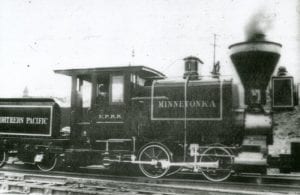
In addition to farming, Lynch also served as justice of the peace in 1912. Other Blacks in the Olequa Territory worked for the railroad as cooks, conductors, brakemen and firemen. Some worked in the hops fields or hauled cargo as draymen. More worked at the sawmills, logging camps, or chicken ranches. A Mr. Hawkins was a mail carrier. Andy Whiteside, whose wife was Lynch’s niece, was the only Black man on the Pacific coast to supervise a logging crew. He was a well-liked leader in his community and known as a great poker player. Whiteside’s wife Ann felt that God brought her to Winlock, and like her husband, she became a highly regarded and vital part of their community.
According to Browne’s research, Blacks were paid the same wages as whites, and if they excelled at their job, they could earn higher wages than their fellow workers.
The heart of the community was the Methodist church that sat on a hill just outside of town. Dubbed “The Old Colored Church,” it was built by both Black and white members in 1919 on land donated by Lynch. The friendly congregation opened its doors to people of both races.
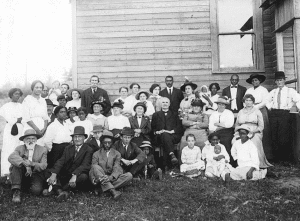
In general, Browne found that the Black community was very respected by the whites who lived there and that Blacks in Winlock may have experienced less discrimination than in other regions. While it is true that some racism existed in the area, it appears that the two groups mixed socially without too much problem.
Both Black and white children attended the same schools. Two local white girls married Black men. C.C. Wall, who wrote an extensive history of Winlock in 1952, specifically mentioned Thomas Lynch and Doc Harp, noting that Harp was a very respected Black gentleman in the community. Harp and his wife adopted two Chinese boys and lived on Tennessee Road outside of Winlock. He lived to be 103 years old and was one of Winlock’s oldest residents.
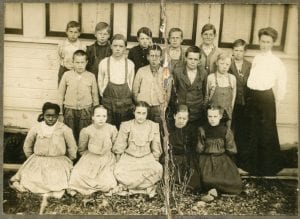
With such a promising community that offered so much more financial and social freedom for Blacks than other areas, it is a puzzle why their population dwindled to almost nothing by the 1950s.
Browne noted that the decline began after the deaths of Thomas Lynch and Andy Whiteside. Perhaps without their strong leadership, active recruitment for new Black settlers slowed. Many of the settlers’ children chose not to stay on the family farms and moved to the bigger cities like Seattle, Portland, and Vancouver. When husbands died, widows joined their children. Possibly the decline of the chicken farm industry affected the Black population, causing both Blacks and whites alike to look for jobs elsewhere.
Even though Winlock’s original Black community no longer exists, the example of those fifty-some years of a “downright friendly atmosphere” is a legacy the little town can be proud of and a history worth repeating.
Additional Historical Background:
Thomas Lynch was originally from North Carolina. His niece, Ann Adams Whiteside, was also from the South. These two and other Black settlers who came to the Northwest during the Jim Crow Era most likely fled the South to escape racial discrimination and oppression and to seek better economic opportunities here.
It must have been terrifying for these new settlers to hear about the rise of the Ku Klux Klan in their new home state. During the 1920s, the Klan gained political power and popularity in Washington especially in cities like Seattle. It also attempted to gain a following here in Lewis County but with less success. A handful of notices in the Chehalis Bee Nugget during that decade mention local Klan gatherings that included speeches, parades, celebrations, and social events. Nearby Vader had an active group numbering at least 60 members with some from Winlock. Not everyone was enthusiastic. In the October 6, 1922 edition, the Chehalis Bee Nugget publicly opposed the organization and hoped the “people of this conservative and law-abiding section will do all in their power to discourage the formation of such an organization.” There was little to no mention in the Nugget of Klan activities past the 1920s, and it is not known if any members of the Winlock Black community suffered as a result of their presence.
Author’s note:
Unfortunately, no photographs of any of the notable Black people mentioned in this article could be located at the time of publication. If any of our readers have access to photos of these or other Black people from the Winlock community, please feel free to email them to submit@lewistalk.com or leave it in the comments on this article’s Facebook post. Thank you!





